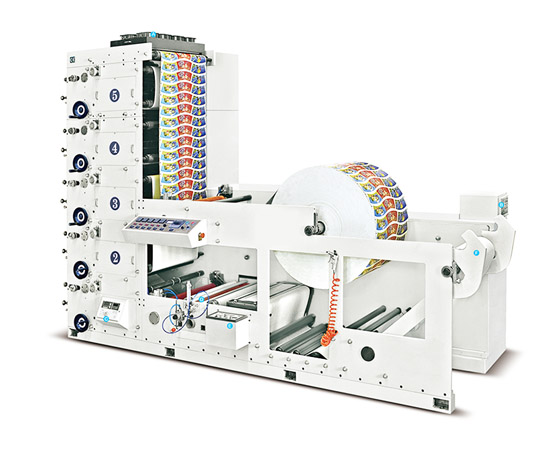Rotogravure printing, often referred to as gravure printing, is a high-quality, high-speed printing process used for producing packaging materials, magazines, catalogs, labels, and more. This technique stands out for its exceptional print quality, consistency, and durability. In this article, we delve into the technology and techniques that make rotogravure printing a preferred choice in the world of commercial printing. At the heart of rotogravure printing lies a cylindrical printing plate that carries the image to be printed. This cylinder is engraved with depressions, each representing a specific color or shade. The engraving process, done mechanically or chemically, is what sets rotogravure apart.
 Ink Application – The ink is stored in a chamber, often referred to as the ink pan. The engraved cylinder rotates through this ink pan, picking up the ink. The excess ink is then wiped off by a doctor blade, leaving ink only in the engraved cells.
Ink Application – The ink is stored in a chamber, often referred to as the ink pan. The engraved cylinder rotates through this ink pan, picking up the ink. The excess ink is then wiped off by a doctor blade, leaving ink only in the engraved cells.
Printing Process – The substrate the material to be printed is pressed against the rotating engraved cylinder. As the cylinder rotates, it transfers the ink to the substrate. The pressure applied ensures that the ink is consistently and accurately deposited onto the material.
Drying and Finishing – After printing, the material passes through a drying unit to set the ink. Various post-printing processes like cutting, folding, or binding can then be applied as needed.
Advantages of Rotogravure Printing:
Image Quality – The rotogravure printing machine produces exceptionally sharp and vibrant images, making it ideal for high-end products where image quality is crucial.
Consistency – Thanks to the engraved cylinders and precise ink control, rotogravure maintains a high level of consistency across print runs.
Durability – The ink is deeply set into the substrate, ensuring that the final product is resistant to abrasion and environmental factors.
Speed – Rotogravure is a high-speed printing process, making it suitable for large print runs.
Techniques for Achieving Excellence in Rotogravure Printing:
Cylinder Preparation – The quality of the engraved cylinder is paramount. The engraving process should be precise, ensuring that the cells are uniform and accurate. This requires skilled engravers and modern engraving technology.
Ink Control – Achieving the right ink consistency and controlling its flow is crucial. A precise doctor blade and ink pan design are essential for this. Ink viscosity and color consistency must be maintained.
Substrate Choice – The choice of substrate plays a significant role in the final result. It should be compatible with the ink and the printing process. Substrate quality directly affects the print’s durability and appearance.
Drying and Curing – The drying process should be carefully monitored to ensure that the ink is properly set. Inconsistent drying can lead to defects in the final product.
Maintenance – Regular maintenance of the machinery, including the engraved cylinders, doctor blades, and ink pans, is essential to keep the process running smoothly and producing high-quality prints.
Color Management – Utilizing color management systems is critical to achieving consistent color reproduction across different print runs.
When executed correctly, flexo printing machine stands out as a versatile and reliable choice for various printing needs, from packaging to publications, creating visually stunning and long-lasting products.